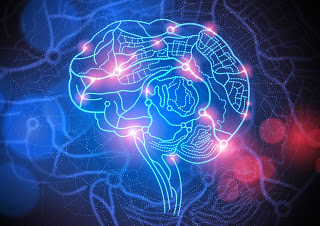July 17, 2014
There is a growing recognition in both the U.S. and Europe that a fundamental understanding of how the brain works is an urgent priority. This flows from the awareness that the public health burden of brain-based conditions is staggering, and that for the first time we have some truly promising tools to help us get there. This substantial scientific effort will take patience but it also holds much promise.
The approaches on either side of the Atlantic are quite different. Given how much of what we know from drug discovery is rooted in good observation and chance, it is hard to predict what approach will yield the best results.
In the U.S. former President Obama announced the BRAIN Initiative, which will “seek to map the circuits of the brain, measure the fluctuating patterns of electrical and chemical activity flowing within those circuits, and understand how their interplay creates our unique cognitive and behavioral capabilities.”
In Europe the European Union’s Human Brain Project (HBP) seeks to model the human brain on supercomputers. Recently some scientists have formally criticized the EU approach, calling it premature. Regardless, both investments represent nearly simultaneous multiyear commitments to better understandings of the neuroscience we need so badly to advance care.
Understanding the brain better does not mean mental conditions are only about genes or biology. An important principle is that environment impacts genes and gene expression—this concept is called epigenetics. Environment could mean protective elements like love and holding or risks like viruses at certain stages of neurodevelopment or traumatic experiences. It’s important to think both and not either-or when thinking of psychiatric conditions and the brain and environment.
We have a greet deal to learn but have already come upon some important findings. We do know that the brain is more plastic—able to adapt and be shaped—than was first thought. Imaging the brain (fMRI, PET scans) have helped us move forward in basic functional understanding, but isn’t a clinically useful tool at this time.
On the basic science side, two major recent breakthroughs stand out. First, the ability to generate stem cells from adult skin holds great promise. In 2014, scientists have looked at nerve cell responses taken from stem cells from individuals with bipolar disorder to learn how they function differently than from people without bipolar disorder. Another recent basic science breakthrough is optogenetics, which is the ability to impact specific cells through light and modified proteins. These are not yet clinically useful, but will teach us a great deal about the human brain. That knowledge will lead to better interventions.
One of the challenges I have as NAMI’s Medical Director is cautioning patience even as I am so hopeful that novel scientific avenues will bear fruit. It is hard to know when and what new treatments and interventions can come from a more thorough understanding of the human brain. People want and deserve better treatments now, as there is a great deal of unmet need in the areas of brain disorders. Both a commitment to science to learn more and getting people what we already know works are essential.
We’re always accepting submissions to the NAMI Blog! We feature the latest research, stories of recovery, ways to end stigma and strategies for living well with mental illness. Most importantly: We feature your voices.
LEARN MORENAMI HelpLine is available M-F, 10 a.m. – 10 p.m. ET. Call 800-950-6264,
text “NAMI” to 62640, or email. In a crisis, call or text 988 (24/7).